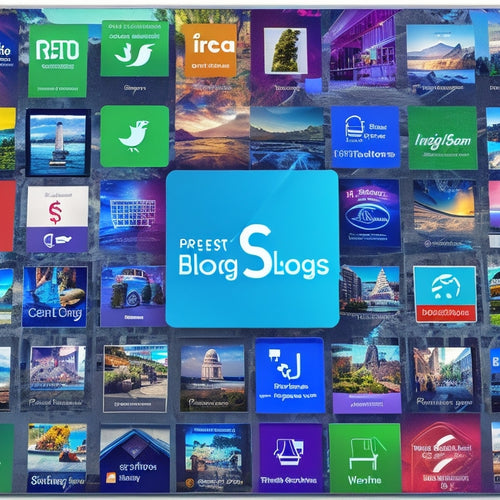
5 Ways Merchants Overcome Online Course Creation Hurdles
Share
When developing an online course, you'll face obstacles that can delay your project. To overcome them, you'll need to break down intricate topics into manageable sections, utilize visual aids, and simplify ideas. Invest in troubleshooting software to tackle technical issues, and create captivating content with interactive activities and multimedia. Establish realistic timelines and budgets, and prioritize tasks to effectively manage your time and resources. Lastly, ensure your course stays up-to-date by focusing on demographics, gathering feedback, and monitoring industry trends. By addressing these typical obstacles, you'll be well on your way to creating a successful online course - and there's more to discover on how to accomplish that.
Key Takeaways
• Merchants break down complex topics into manageable chunks, using visual aids and bite-sized modules to simplify learning and reduce cognitive overload.
• They invest in troubleshooting software and partner with tech support to ensure a smooth technical experience and address technical concerns promptly.
• Creating engaging content is key, with well-organized narratives, interactive activities, and multimedia integration to cater to diverse learning styles.
• Effective time and resource management involves creating project schedules, assigning clear roles, and utilizing technology to streamline workflows and meet deadlines.
• Merchants ensure course relevance by targeting demographics, collecting feedback, and staying up-to-date with industry trends to create resonating and continuously improving content.
Breaking Down Complex Topics
When developing an online course, you'll likely encounter complex topics that need to be broken down into manageable, easily digestible chunks to guarantee your students can comprehend and retain the information.
This process requires a strategic approach to simplify concepts and make them accessible to your audience. One effective way to achieve this is by leveraging visual aids. By incorporating diagrams, flowcharts, and infographics, you can transform abstract ideas into concrete, easy-to-understand visuals. This not only enhances learning but also reduces cognitive overload, allowing students to focus on the key takeaways.
Additionally, breaking down complex topics into smaller, bite-sized modules enables students to progress at their own pace, reinforcing their understanding of each concept before moving on to the next. By applying these strategies, you can create an online course that's both informative and engaging, empowering your students to master even the most challenging subjects.
Overcoming Technical Difficulties
As you simplify complex topics and create engaging modules, you'll likely encounter another hurdle: ensuring that your online course runs smoothly from a technical standpoint. This is where technical difficulties can arise, and it's crucial to be prepared to overcome them.
To avoid technical hiccups, consider the following strategies:
-
Invest in troubleshooting software: Identify and resolve technical issues quickly, ensuring your course remains accessible to students.
-
Leverage tech support assistance: Partner with a reliable tech support team to address any technical concerns, freeing you to focus on content creation.
-
Conduct thorough testing: Test your course content on various devices and browsers to catch any technical glitches before launch.
Creating Engaging Course Content
You'll need to craft compelling lessons that resonate with your students, making your course content engaging, informative, and easy to digest. To achieve this, focus on creating a well-organized narrative that flows logically and maintains students' interest.
Break down complex topics into bite-sized chunks, using clear headings, concise paragraphs, and bullet points to enhance readability.
Incorporate interactive activities that encourage students to participate and engage with the material. This can include quizzes, gamification, and discussion forums that foster a sense of community and promote collaborative learning.
Multimedia integration is also essential, as it allows you to convey information in diverse formats, such as videos, images, and infographics. This approach caters to different learning styles, increasing the chances of students retaining information and applying it in real-world scenarios.
Managing Time and Resources
Now that you've crafted engaging course content, allocate a realistic timeline and budget to guarantee its successful production and implementation. Effective time management and resource allocation are vital to overcoming online course creation hurdles. You must prioritize tasks, set deadlines, and assign responsibilities to team members to secure efficient production.
To optimize your time and resources, consider the following strategies:
-
Create a project schedule: Break down the production process into manageable tasks and allocate specific timeframes for each activity.
-
Assign clear roles and responsibilities: Identify the strengths and weaknesses of your team members and delegate tasks accordingly to maximize productivity.
-
Leverage technology and tools: Utilize project management software, collaboration platforms, and other digital tools to streamline workflows, enhance communication, and reduce costs.
Ensuring Course Relevance
Your online course's pertinence to its target audience is crucial to its success, and it's important to make sure that your content stays up-to-date and aligned with their evolving needs and expectations. To achieve this, you need to regularly assess and refine your course content to guarantee it remains relevant and valuable to your learners.
Here are some strategies to help you maintain course relevance:
| Strategy | Description | Benefits |
|---|---|---|
| Targeting demographics | Analyze your learners' demographics, interests, and pain points to create content that resonates with them. | Increased learner engagement, improved course outcomes |
| Collecting course feedback | Regularly collect feedback from learners to identify areas for improvement and update your content accordingly. | Improved course quality, enhanced learner satisfaction |
| Monitoring industry trends | Stay up-to-date with the latest industry trends and advancements to guarantee your course content remains current and relevant. | Enhanced course credibility, improved learner outcomes |
| Conducting competitor analysis | Analyze your competitors' courses to identify gaps and opportunities to enhance your own course content. | Improved course differentiation, increased market competitiveness |
| Scheduling regular course updates | Regularly update your course content to reflect changes in the industry, technology, or learner needs. | Improved course relevance, enhanced learner experience |
Frequently Asked Questions
How Do I Handle Negative Feedback From Course Participants?
When handling negative feedback, you respond professionally by acknowledging concerns and adapting content to address issues, ensuring improved course quality and participant satisfaction, while maintaining a positive and solution-focused online learning environment.
Can I Sell My Course on Multiple Platforms Simultaneously?
As you juggle multiple platforms, like a master juggler balancing fiery torches, you'll need to navigate platform exclusivity, diversify marketing strategies, adapt pricing models, and guarantee seamless course updates to maximize your online course's reach and revenue.
What's the Ideal Course Length for Retaining Student Engagement?
You'll maximize student engagement by structuring your course into 3-5 minute micro-lessons, spaced 7-10 days apart, allowing for digestible content delivery and effective retention strategies, ultimately driving long-term student commitment.
Do I Need to Provide Ongoing Support to Course Graduates?
"You're done with the course, now you can wash your hands of those graduates, right? Not if you want to maintain a stellar reputation! You'll need to provide ongoing support to foster alumni engagement and community building, ensuring they remain loyal advocates."
Can I Use Copyrighted Materials in My Online Course Content?
When creating online course content, you'll need to navigate copyright laws carefully. You can't simply use copyrighted materials, but you may be able to claim fair use. Instead, focus on original content creation to avoid legal issues.
Related Posts
-

10 Essential Integrations for Seamless Online Learning
You're already utilizing digital tools for online learning, but seamless experiences require more. You need to integr...
-

SEO Shopify Apps Empower Merchants to Boost Organic Traffic by Enhancing Their Site's Visibility on Search Engines
This article explores the efficacy of SEO Shopify apps in enabling merchants to enhance their website's visibility o...
-

Why Are Blogs Important in Shopify
The importance of blogs in the context of Shopify is a topic of interest in the field of e-commerce. This article ai...


